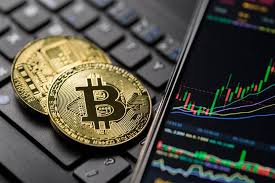
Mastering Cryptocurrency Trading with a Simulator
In today’s fast-paced financial landscape, traders and investors alike are continually searching for an edge that will allow them to outperform the market. One approach that has gained significant traction in the realm of cryptocurrency trading is the use of a trading simulator. A trading simulator allows users to practice their skills in a risk-free environment and test trading strategies before deploying real money. Many people are still unaware of the benefits that these simulators bring. To dive deeper into this exciting topic, Trading Simulator Crypto click here for an insightful discussion.
What is a Trading Simulator?
A trading simulator is a software application that mimics the real-world trading environment, allowing users to trade various financial instruments, including cryptocurrencies, without any financial risk. It provides a virtual trading environment that replicates the conditions of actual trading, including market prices, order executions, and trade management. This enables traders to experience the dynamics of the market and develop their skills.
Why Use a Trading Simulator for Crypto?
There are several compelling reasons to utilize a trading simulator, particularly for cryptocurrency trading:

- Risk-Free Practice: By trading in a simulated environment, new traders can practice their strategies without the fear of losing money. This is especially crucial in the highly volatile crypto market, where prices can fluctuate dramatically within minutes.
- Strategy Testing: Traders can test various trading strategies and refine their methodologies based on the outcomes of simulated trades. This process allows them to understand what works and what doesn’t before risking real capital.
- Emotional Control: One of the fundamental challenges traders face is managing their emotions. A simulator can help them build emotional resilience by providing an environment where they can learn to control their impulses.
- Technical Skills Development: Users can develop and enhance their technical analysis skills through the use of advanced charting tools and features integrated into the simulator.
- Flexible Learning: Traders at all levels can benefit from the simulator. Beginners can start from scratch, while experienced traders can test advanced techniques and strategies.
Features of a Trading Simulator
Modern trading simulators come equipped with various features designed to enhance the trading experience. These can include:
- Real-time Market Data: Access to real-time price feeds, market news, and analysis tools that mirror actual market conditions.
- Customizable Trading Conditions: The ability to modify parameters such as leverage, position sizes, and trade durations to simulate different trading strategies.
- Performance Analytics: Comprehensive analytics tools that track performance, enabling users to review their past trades and understand their strengths and weaknesses.
- Community Features: Many simulators include community-focused elements, allowing users to share experiences, strategies, and insights with other traders.
- Educational Resources: Some platforms offer tutorials, articles, and videos that can help users enhance their trading knowledge and skills.
Popular Trading Simulators for Crypto
With the growing popularity of cryptocurrency, numerous trading simulators have entered the market, each offering unique features. Here are some well-known platforms:

- TradingView: Renowned for its advanced charting capabilities and community-driven features, TradingView offers a paper trading option that allows users to trade cryptocurrencies using virtual money.
- Crypto Parrot: A user-friendly trading simulator focused on cryptocurrency. Crypto Parrot allows users to practice their trading strategies in a fun and interactive environment.
- CoinMarketGame: A simulation platform that gamifies the trading experience, allowing users to buy and sell crypto with virtual money while providing a leaderboard to track performance against others.
- BitMEX Testnet: For those looking to trade derivatives, BitMEX offers a testnet environment allowing traders to experience derivatives trading in the crypto sector.
- eToro: Known for its social trading features, eToro provides a demo account where users can practice trading different assets, including cryptocurrencies.
How to Get Started with a Trading Simulator
Getting started with a trading simulator is straightforward. Here’s a basic guide:
- Choose a Simulator: Research and select a simulator that best fits your trading needs and preferences.
- Create an Account: Sign up on the platform and create an account to start trading in a demo environment.
- Familiarize Yourself: Take time to explore the simulator’s interface, tools, and features. Review any educational resources available.
- Start Trading: Begin with basic trades to understand how the simulator works. Gradually implement more complex strategies as you grow comfortable with the platform.
- Review Your Performance: Regularly analyze your trades, taking notes on what strategies worked or didn’t. Use this feedback to improve your approach.
Conclusion
In conclusion, utilizing a trading simulator in the crypto market can be an indispensable tool for both novice and seasoned traders. By providing a risk-free environment to learn, practice, and refine trading strategies, simulators help users build confidence and improve their decision-making skills. As with any trading endeavor, continual learning and adaptation are key to achieving success in the ever-evolving world of cryptocurrency trading. So why not take the plunge and start mastering your trading skills today?




Leave A Comment